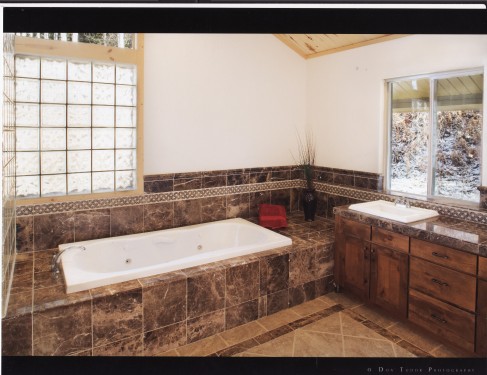Travertine is a form of limestone deposited by mineral springs, especially hot springs. It is formed by a process of rapid precipitation of calcium carbonate, often at the mouth of a hot spring or in a limestone cave. In the U.S., the most well-known place for travertine formation is Yellowstone National Park, where the geothermal areas are rich in travertine deposits.
Travertine is often used as a building material. The Romans mined deposits of travertine for building temples, aqueducts, monuments, bath complexes, and amphitheaters such as the Coliseum, the largest building in the world constructed mostly of travertine.
Because travertine is such a porous material, it should be sealed before use in construction or renovation projects. It is most commonly used for counter-tops and flooring, but may also be used in showers and tub surrounds as well as in exterior decor.
Travertine is available in different colors and finishes, from natural, neutral colors such as creamy white and beige to tan and reddish brown. The color depends quite a bit on the impurities and iron content of the stone. The different finishes include honed, polished, chiseled and tumbled. Honed travertine is smooth, but unlike polished, it has a matte finish. Polished travertine is smooth, buffed and polished until shiny. Tumbled travertine has a rougher, textured finish and often has rounded corners for an antique look. Remember just because a stone may be shiny it doesn’t mean it is sealed.
Never use cleaners that contain vinegar or citrus oils on travertine. Even water can be harmful to the texture of travertine if it is allowed to sit on the stone for long periods of time.
Travertine is imported mostly from Italy, Iran, Mexico, Turkey, and Peru. A decade ago, Italy had a near-monopoly on the world travertine market.
John Vande Velde, Terry’s son outside Rome’s Coliseum, the largest building in the world constructed mostly of travertine.
Carpets Plus stock travertine in Steamboat Springs and have many other travertine’s available within a week of ordering. www.steamboatcarpetsplus.com



